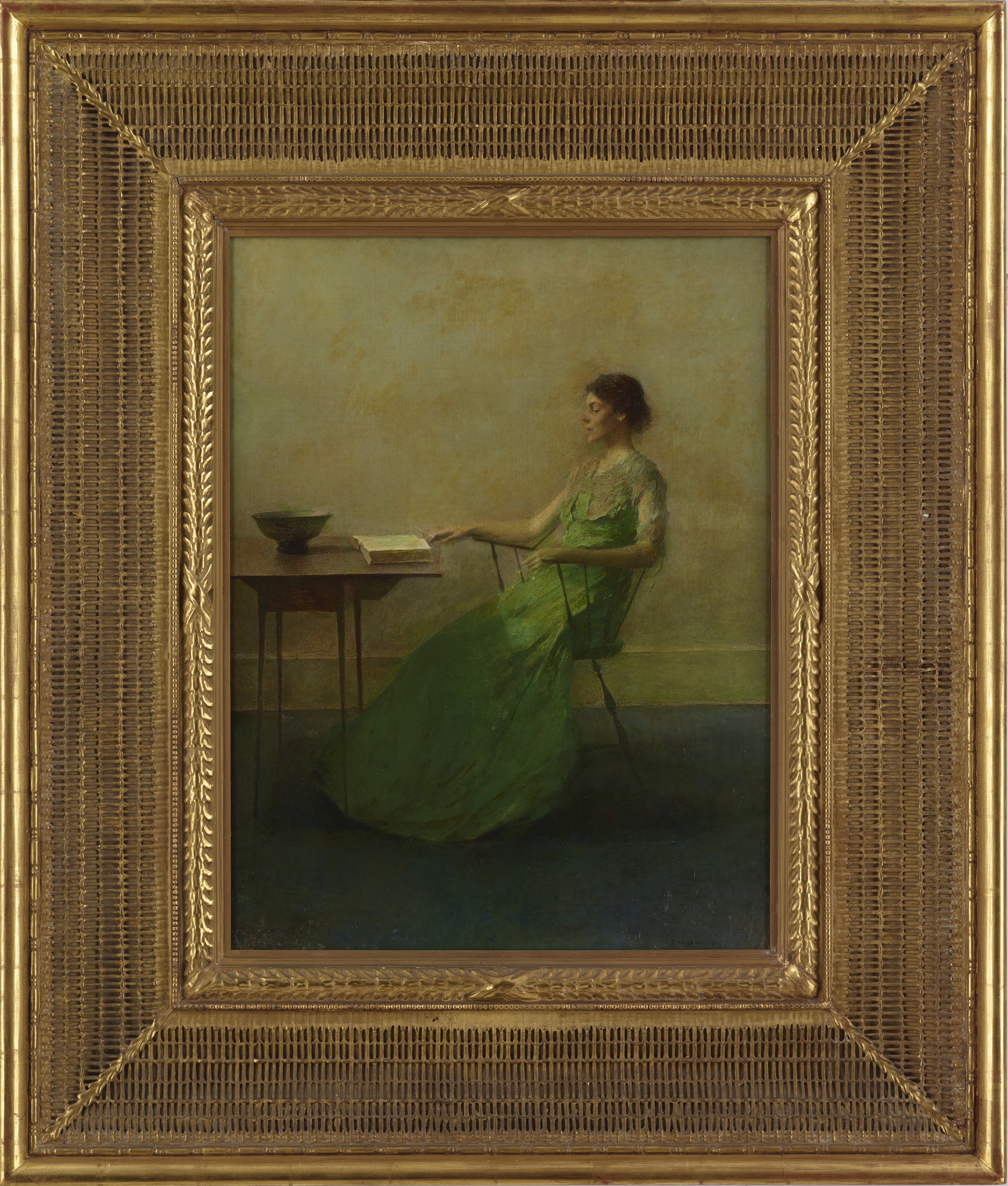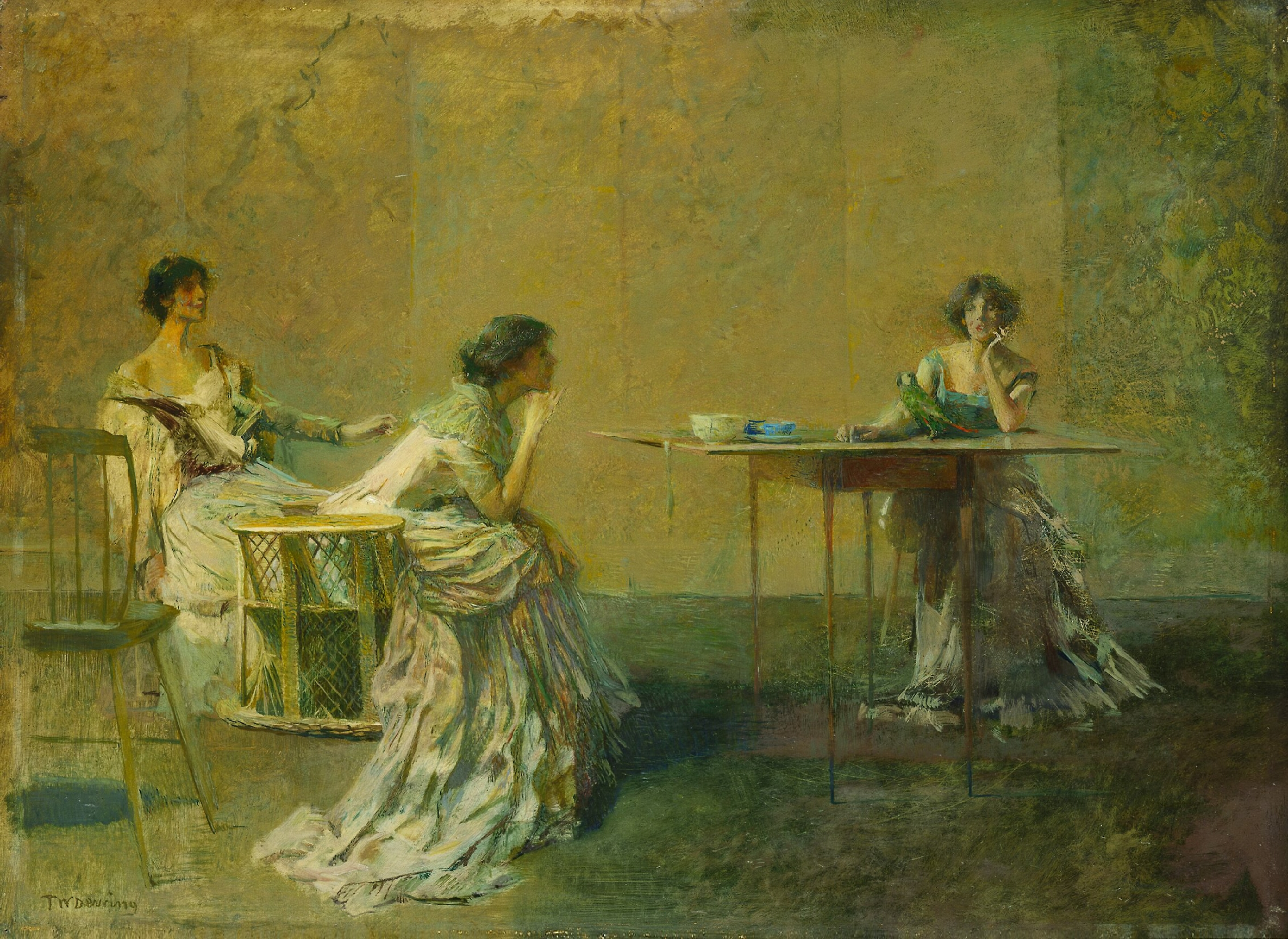The Garland, which takes its title from the tiny floral wreath in the woman’s hand, was one of the last works by Dewing to enter Freer’s collection. The model’s pose recalls Whistler’s famous portrait of his mother, and like that work, this pared-down composition is executed in a narrow tonal range. Its chromatic modulations and sparse arrangement make this a particularly apt illustration of the attention to surface beauty that so appealed to Charles Lang Freer. The model gazes downward at an open book and toward a Japanese ceramic bowl. This directs attention to the room’s overall composition and even to the surface of the canvas itself, which offers a variety of textures, from the long thin strokes of the woman’s gown, the smooth surface resulting from the use of a palette knife on the floor and parts of the background, and the delicate stippling that abstracts and generalizes her features. The elegant figure is Gertrude McNeill, a noted model. A year after posing for this painting, she left New York City for Hollywood, where she enjoyed a successful career as a silent film star.
We present today's painting thanks to the National Museum of Asian Art.
: )
P.S. You can read about Whistler’s famous portrait of his mother here!


 Thomas Wilmer Dewing
Thomas Wilmer Dewing